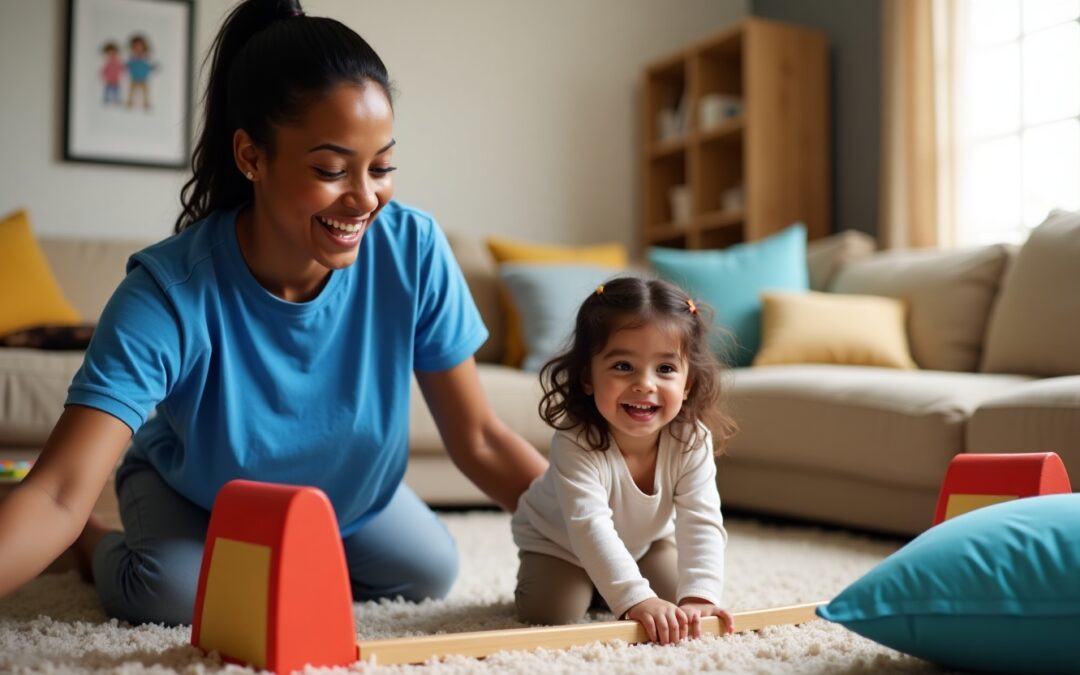When colder months roll in or the dreaded winter sniffles keep kids home from school, parents and nannies alike know how challenging it can be to keep little ones engaged, active, and calm indoors, especially if there are family members working from home. That’s where thoughtful at-home play comes in. A well-designed sensory-smart play space doesn’t just keep boredom at bay; it supports emotional regulation, focus, and healthy development.
The best part? You don’t need an expensive and transformative playroom makeover to create it. With the right setup and a few creative strategies, you can transform any corner in your home into a space that inspires curiosity and calm.
1) Why a Sensory-Smart Play Space Matters
In its most basic sense, a sensory-smart play space is an area that is made to engage all five senses. Sensory-smart environments help children process and respond to the world around them. From soft textures that calm anxious minds to bright colors that spark creativity, sensory play helps kids develop fine motor skills, problem-solving abilities, and emotional balance. They integrate exploration and movement to engage children’s cognitive, motor, and social skills.
For nannies and parents, an intentional play setup also provides structure, giving children a predictable space to explore and express themselves safely, even on days when going on adventures out of the home isn’t an option.
2) Low-Cost Ways to Create a Sensory-Smart Play Area
You don’t need a dedicated playroom or high-end toys to make a big impact. Start with what you have and focus on the senses: touch, sight, sound, and movement.
- Sensory bins: Use a large plastic container and fill it with rice, dried beans, or kinetic sand. Add scoops, cups, and small toys for open-ended exploration.
- Texture corner: Set up a small rug or mat with different fabric swatches (fleece, corduroy, faux fur). Babies and toddlers love exploring new textures with their hands and feet.
- Movement zone: Create a mini obstacle course with pillows, tunnels, and balance beams made from painter’s tape. Gross motor activities help children regulate energy and improve coordination.
- Calm-down area: Include a soft chair, cozy blanket, and low light. A small bin of books or fidget toys can turn this corner into a safe, self-regulation space.
- DIY art station: Stock a low shelf or basket with washable markers, crayons, and paper. Art helps children process emotions and encourages independence.
3) How (and Why) to Rotate Toys and Materials
One of the simplest ways to keep at-home play fresh and exciting? Toy rotation. A common Montessori practice, instead of overwhelming children with every toy they own at once, choose a small selection to display for a week or two. Store the rest out of sight, and swap them out after a couple of weeks.
This approach not only helps children stay engaged but also encourages deeper, more focused play. (And it doesn’t hurt that it eliminates some clutter, too.) You’ll often find that when there’s less clutter, kids play longer and more creatively with what’s available.
4) Encouraging Independence with Smart Storage Solutions for At-Home Play
When setting up your play space, think about accessibility. Clear bins, low shelves, and labeled containers make it easy for children to find and put away toys on their own. (This doesn’t apply to toy rotation toys, though, as the toys out of the current rotation should be kept out of sight.)
Consider dividing play materials into zones:
- Creative Zone: Include art supplies, building blocks, and pretend play toys.
- Calm Zone: Include books, soft toys, and sensory tools.
- Movement Zone: Include items for physical play and energy release.
Encouraging kids to take ownership of their play space helps them develop responsibility, confidence, and organization skills, valuable lessons that extend far beyond playtime.
5) A Little Intention Goes a Long Way
At-home play doesn’t have to be complicated. By creating a sensory-smart environment that supports exploration, independence, and calm, parents and nannies can make indoor days full of at-home play feel just as enriching as outdoor adventures.
Start small, rotate often, and watch them thrive, no matter what the weather brings.


Recent Comments